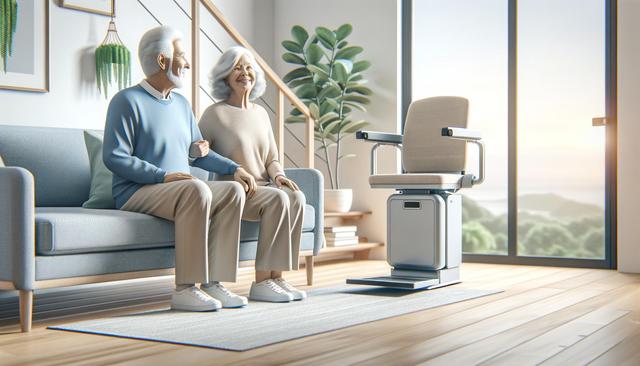Understanding Stair Lifts for Seniors
Stair lifts provide a safe and reliable way for older adults to navigate between different levels of their home. As mobility challenges increase with age, these devices can help seniors maintain their independence and reduce the risk of falls. A stair lift for seniors typically includes a motorized chair that travels along a track mounted to the staircase. Depending on the model, stair lifts can be customized to fit straight or curved staircases and come with features like swivel seats, seatbelts, and remote controls. The goal is to make daily life more manageable and reduce reliance on caregivers or family members for mobility support.
For many individuals, investing in a stair lift is not just about convenience but about essential safety. It allows seniors to continue living in multi-story homes without the stress or danger of using stairs. As families explore options, they often search for stair lift seniors products that meet their specific needs and home layout, balancing functionality with affordability.
Does Medicare Cover Stair Lifts?
One of the most common questions families ask is, “Does Medicare cover stair lifts for seniors?” Unfortunately, the answer is not straightforward. Traditional Medicare (Parts A and B) typically does not cover stair lifts, as they are considered home modifications rather than durable medical equipment. Medicare generally limits its coverage to items that are medically necessary and used inside the home, such as wheelchairs or walkers. Since a stair lift is installed in the structure of the home, it usually falls outside of this definition.
However, there are exceptions and alternative options to consider. Some Medicare Advantage plans (Part C), offered by private insurers, may have more flexible benefits that include coverage or partial reimbursement for home accessibility devices. It’s essential to check the specific plan’s details and speak with a plan representative for clarity. Additionally, other programs, such as Medicaid or veterans’ benefits, may offer assistance depending on eligibility and location.
Financial Assistance and Alternatives
If Medicare does not cover a stair lift, there are still several paths to explore for financial help. Many state and local programs support aging-in-place initiatives, which may include funding for home modifications like stair lifts. Some of the resources that could help include:
- Local Area Agencies on Aging (AAA)
- State-based Medicaid waivers
- Veterans Affairs (VA) benefits
- Non-profit grants for home accessibility
In addition to public programs, stair lift manufacturers and dealers sometimes offer financing plans or refurbished units at a lower cost. Families should inquire about rental options as well, especially if the need is temporary due to recovery from surgery or injury. Understanding the full range of resources can make a stair lift for seniors more financially attainable.
Choosing the Right Stair Lift
When selecting a stair lift seniors can rely on, it’s important to assess both the specific needs of the user and the layout of the home. Key considerations include:
- Type of staircase – straight, curved, or outdoor
- Weight capacity of the lift
- Ease of use and control options
- Safety features like seat belts and obstruction sensors
- Warranty and maintenance support
It may be helpful to schedule a professional assessment to ensure the lift fits properly and operates safely. Some companies offer free home evaluations during the planning stage. Also, reading customer reviews and comparing multiple models can help in making an informed decision. A stair lift for seniors should be both functional and tailored to the user’s comfort and safety needs.
Long-Term Benefits of Stair Lifts
Beyond the immediate safety improvements, stair lifts offer long-term benefits for seniors who wish to age in place. They reduce physical strain, prevent accidents, and can delay or eliminate the need for more intensive care or relocation. For many families, installing a stair lift is a proactive step that gives peace of mind and supports a loved one’s independence.
Moreover, having a stair lift installed can enhance the resale value of a home when marketed to buyers looking for accessible living spaces. It also helps caregivers by minimizing the physical effort required to assist with stair navigation. In cases where seniors live alone, a stair lift provides a greater sense of autonomy and security, especially during emergencies.
Conclusion: Empowering Independence with the Right Support
While traditional Medicare may not cover a stair lift for seniors, understanding all available options can open doors to financial help and practical solutions. By exploring Medicare Advantage alternatives, local assistance programs, and choosing the right equipment, families can make a meaningful investment in safety and independence. For seniors facing mobility challenges, a stair lift can be a life-enhancing addition that allows them to confidently navigate their homes and maintain a higher quality of life.

Leave a Reply